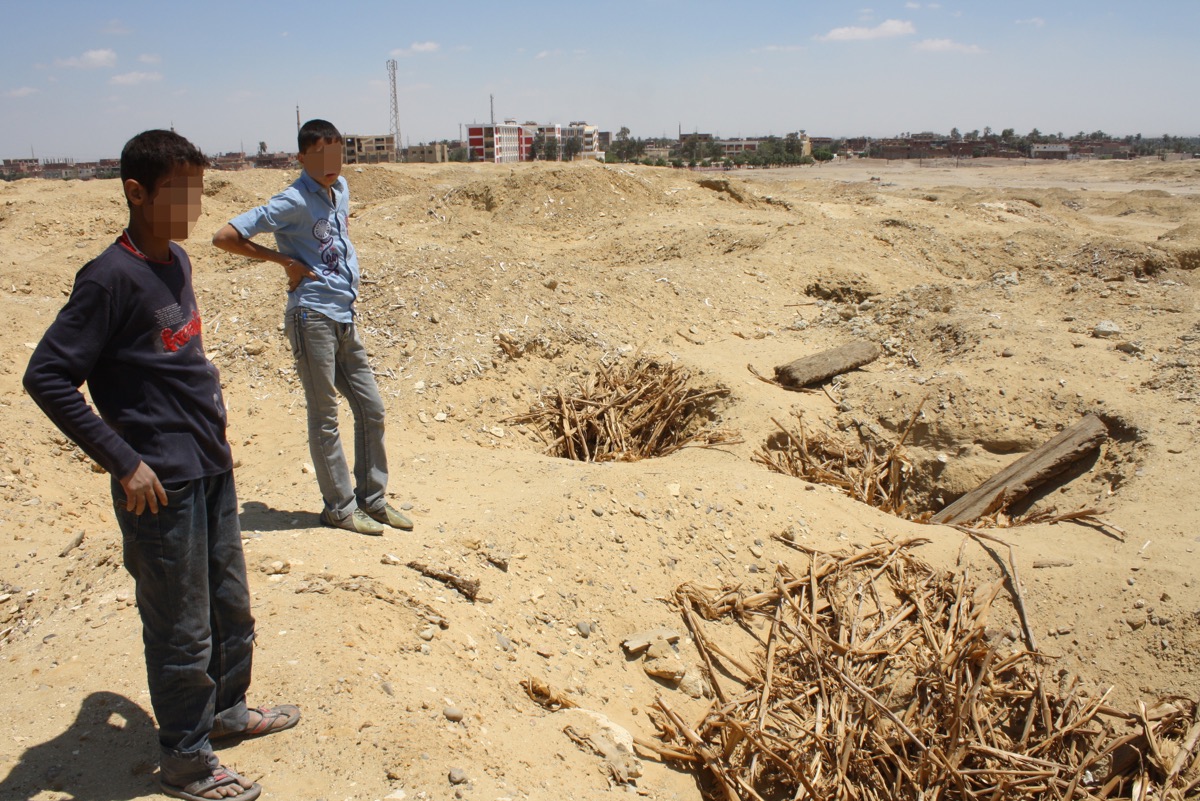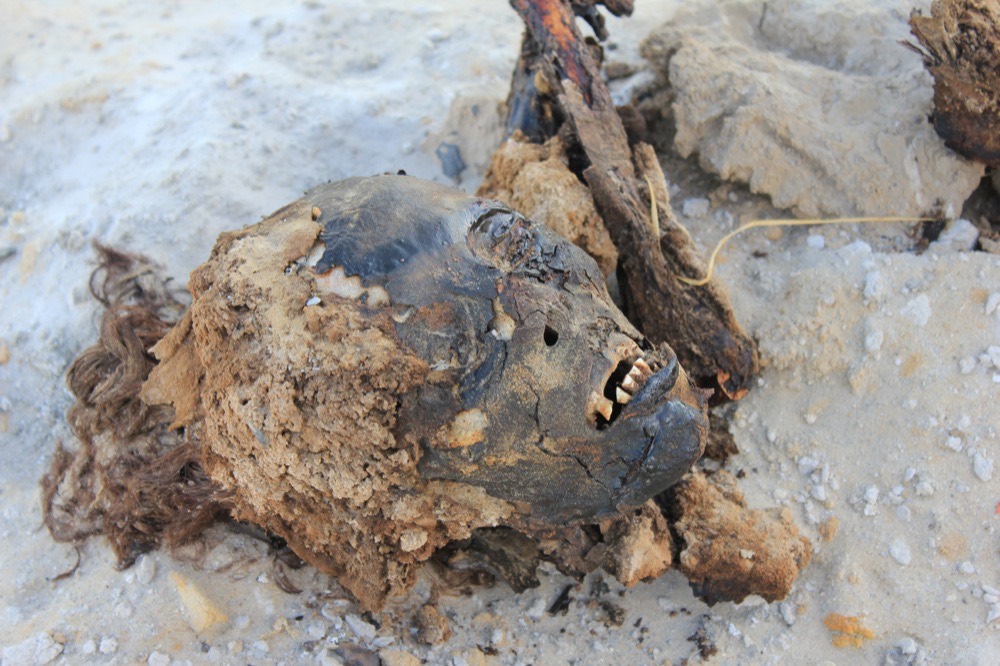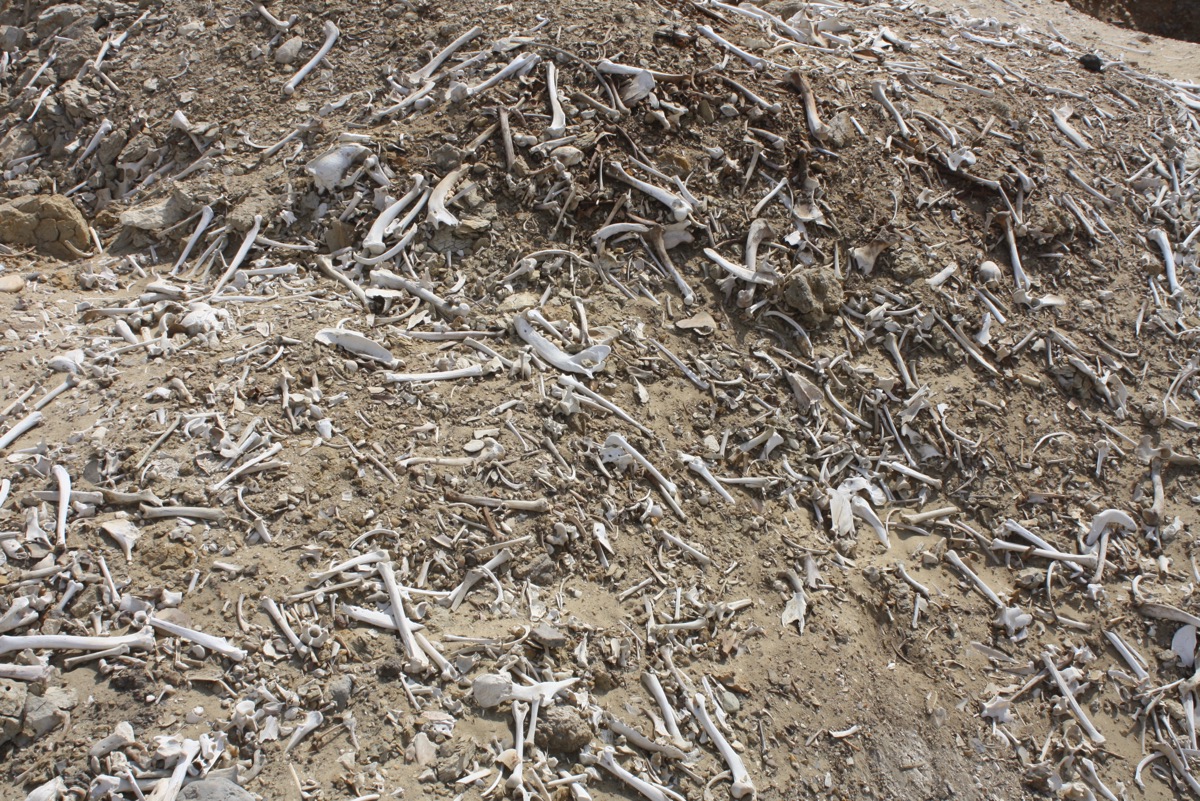Blood & Gold: Children Dying As Egypt's Treasures Are Looted

Since the 2011 Egyptian revolution, political instability and a tourism decline have led to widespread looting of archaeological sites — with deadly consequences.
Children forced to work in dangerous conditions to pillage historical sites have died. Antiquities guards were gunned down within an ancient tomb they were trying to protect. Mummies have been left out in the sun to rot after their tombs were robbed. And looting pits have pockmarked ancient sites in such vast numbers that words cannot adequately describe.
A Live Science investigation found that not only were these horrific events happening but that an enormous amount of potentially looted Egyptian artifacts had made their way into the United States. These artifacts include a vast number of gold coins. [See Photos of the Looting in Egypt]
Documents obtained from the US Census Bureau by Live Science reveal that since 2011, more than $143 million worth of artifacts have been exported from Egypt to the United States. The artifacts were brought into the United States for personal or commercial use, rather than temporary display in a museum, the documents say. The documents also show that the vast majority of the artifacts were shipped to New York City, where many auction houses, antiquities dealers and art galleries are based. However, detecting a shipment of looted artifacts and proving that they were looted is very difficult, researchers and government officials told Live Science.
The influx of Egyptian artifacts into the United States shows no signs of abating. In the first five months of 2016, about $26 million worth of artifacts were exported from Egypt to the United States, the Census Bureau documents say.
Since 2011, more than 45 lbs. (20 kilograms) of antique gold coins have been exported to the United States from Egypt — that's about twice the weight of Tutankhamun's famous golden death mask. Between 1998 and 2010 only 4 pounds (less than 2 kilograms) of gold coins were exported from Egypt to the United States the documents say. [In Photos: The Life and Death of King Tut]
Deaths in Egypt
Photos provided by Egypt's Heritage Task Force, which has been tracking looting in Egypt — show children working at Abusir el-Malek, a village south of Cairo that holds an ancient cemetery with thousands of burials. In the photos, the children can be seen carrying artifacts and rummaging around in pits and shafts. The photographs show how narrow and deep the holes get, creating dangerous working conditions that have led to the deaths of children researchers have found. The photos show that the landscape the children work in is scarred by these pits and is strewn with the bones of ancient mummies.
Sign up for the Live Science daily newsletter now
Get the world’s most fascinating discoveries delivered straight to your inbox.

"Children have been used primarily to reach small burial shafts and tunnels. Unfortunately, many children have lost their lives in the process," wrote Monica Hanna, an Egyptologist working with Egypt's Heritage Task Force, in a paper she published in the book "Countering Illicit Traffic in Cultural Goods" (ICOM, 2015).
In fact, more than 25 children, employed by professional antiquities gangs, died last year in shafts in Abusir el-Malek, Hanna told Live Science.
Little of the money from the sale of artifacts goes to the children's families, Hanna said. Instead, most of it ends up in the pockets of antiquities dealers and middlemen, who smuggle it out of Egypt and into other countries, such as the United States. "Many of them [the middlemen] are part of the international mafia that smuggles drugs and arms in the region," Hanna said, according to her research and that of her colleagues.
Hanna said buyers of Egyptian antiquities should know that "the object you buy does not only have a child's blood on it, but also [that] looting activities have completely destroyed the site similarly to what ISIS does to other archaeological sites in the region." [Reclaimed History: 9 Repatriated Egyptian Antiquities]
Children working in the shafts are not the only ones being killed in the looting. Two guards — Mustafa Ali, 36, and Asrawy, 56 — were gunned down by a group of robbers on Feb. 20, 2016, while inside a 4,000-year-old tomb at the site of Dayr al-Barsha,according to a team of archaeologists working at the site. Both guards left behind families, including a wife pregnant with twins. (A GoFundMe page was set up by the archaeological team working at Dayr al-Barsha to help out the families of the two killed guards.)
They died in a hail of bullets. "Over 20 bullet holes impacted in the relief decoration on the walls of the exterior room and two large blackened blood stains on the floor indicate the spots [in the tomb] where Asrawy and Mustafa were murdered," the archaeological team wrote in a statement on the web page.
Tricky to catch
It can be very challenging to find looted artifacts that are being exported to the United States, sources tell Live Science.

"It is extremely difficult to prove that any single artifact that arrives in the U.S. has been looted," said Erin Thompson, a professor of art crime at the City University of New York. "Middlemen are experts in making looted and smuggled antiquities look like they are part of the legitimate market by cleaning and restoring them and creating forged paperwork that makes it seem like Egypt gave permission for its export."
"Suddenly, an artifact that was ripped out of the ground last month is indistinguishable from one that's been in a private collection for decades, and which is entirely legal to export and sell," Thompson added.
Furthermore, U.S. Customs doesn't check all shipments; a spokesperson for U.S. Customs and Border Protection told Live Science that the agency conducts audits of antique shipments but declined to say how often this is done.
The spokesperson also said that it is the responsibility of the person importing the shipment to declare the shipment's value. This means that the $143 million is simply the value of the imported Egyptian artifacts being declared by importers; the actual resale value could be higher.
Additionally, the documents obtained by Live Science show only shipments that made it to the U.S., the Census Bureau spokesperson said. Because the documents don't include shipments that Customs agents stopped and impounded, the amount of Egyptian antiquities reaching the United States could be even higher.
Golden treasure
Many of these artifacts are simply declared by importers as being "antiques" that are over 100 years old, although some are labeled more specifically.
The antique gold coins are the largest category of identified artifacts recorded in the documents. The data show that before 2009, few gold coins were brought into the United States from Egypt. The number grew in 2009 and surged in the years following the 2011 Egyptian revolution.
Coins have been minted in Egypt for more than 2,000 years. Some of the earliest Egyptian coins were minted by the Ptolemies, a dynasty of rulers descended from Ptolemy Soter, one of Alexander the Great's generals. Alexander conquered Egypt in 332 B.C., and the Ptolemies ruled the country until 30 B.C., when Cleopatra VII, the last Ptolemaic ruler, died by suicide after the Battle of Actium. After Cleopatra's death, Egypt was incorporated into the Roman Empire.
One explanation for the abrupt increase in imported gold coins comes from satellite research conducted by a team led by Sarah Parcak, an anthropology professor at the University of Alabama at Birmingham.
After examining satellite images of Egypt from the past two decades, her team found that the looters prefer portable objects from sites dating to periods after minted coins were invented. "Overall, 55% of the affected sites were of Late Period (Dynasties 26-30) to Roman-period date," Parcak's team wrote in a paper published in February in the journal Antiquity.
Some of the gold coins coming into the United States could also be forgeries, Hanna told Live Science. "A lot of local jewelers fake gold coins and sell them as antiquities," she said.
Original article on Live Science.

Owen Jarus is a regular contributor to Live Science who writes about archaeology and humans' past. He has also written for The Independent (UK), The Canadian Press (CP) and The Associated Press (AP), among others. Owen has a bachelor of arts degree from the University of Toronto and a journalism degree from Ryerson University.










